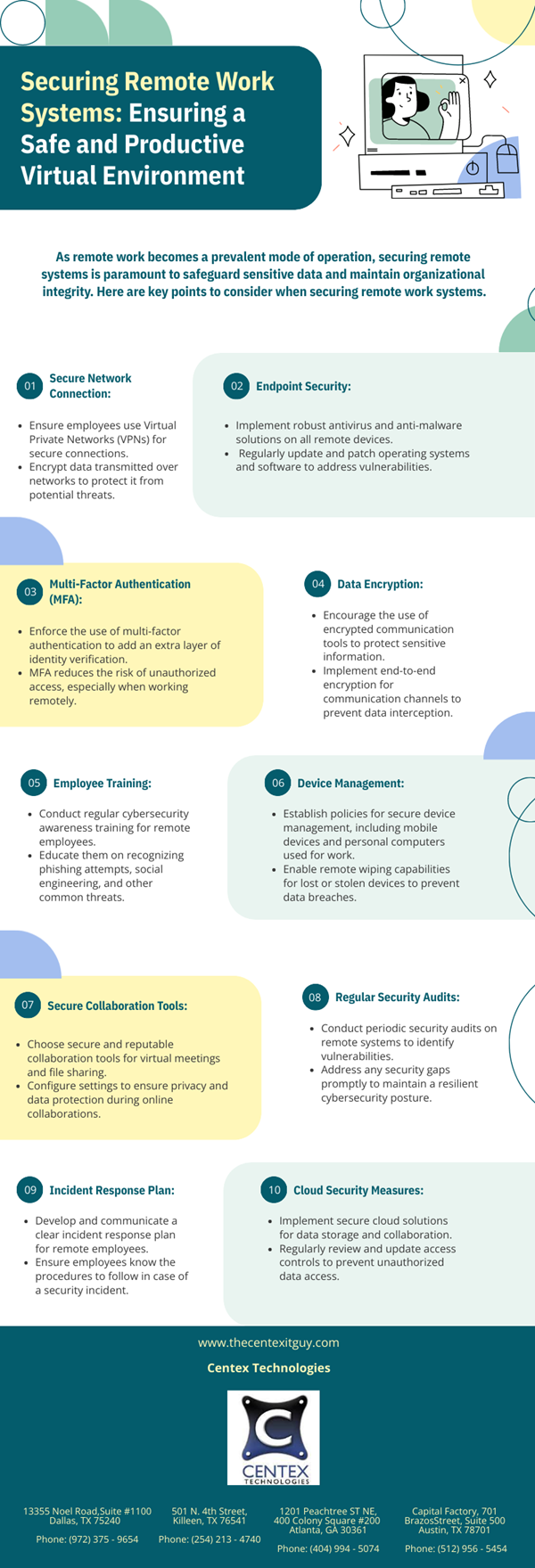As enterprises undergo expansion, the reliance on third-party vendors for diverse services and solutions becomes an inherent necessity. While enhancing operational efficiency and scalability, this interconnected ecosystem introduces complexities that organizations must adeptly navigate to uphold robust cybersecurity practices. Any vulnerability in a vendor’s cybersecurity measures can serve as an entry point for malicious actors, jeopardizing sensitive data, intellectual property, and the overall integrity of an enterprise’s digital infrastructure.
Assessing Vendor Security:
- Rigorous Vendor Assessments: To mitigate risks associated with vendor relationships, enterprises must conduct thorough assessments of their vendors’ cybersecurity measures. This includes evaluating the vendor’s security protocols, data handling practices, and adherence to industry standards and regulations.
- Compliance and Standards: Ensuring that vendors comply with cybersecurity standards and regulations is fundamental. This involves aligning vendor security practices with industry-specific standards, international frameworks, and regional data protection laws. Compliance not only safeguards the enterprise but also fosters a culture of responsible data handling among vendors.
Ensuring Vendor Security
- Establishing Security Expectations: Enterprises must establish explicit security expectations with vendors, encompassing data protection, encryption standards, incident response procedures, and other critical security measures. This proactive approach ensures that vendors align their practices with the enterprise’s cybersecurity objectives.
- Shared Responsibility: Vendor security is not solely the responsibility of the vendors themselves; it is a shared responsibility. Enterprises must actively engage with vendors, providing resources, guidance, and support to enhance their cybersecurity capabilities. This collaborative approach fosters a mutual commitment to cybersecurity excellence.
- Real-time Threat Monitoring: Given the dynamic nature of cyber threats, enterprises must implement continuous monitoring mechanisms for vendor activities. Real-time threat monitoring allows organizations to detect and respond promptly to any security incidents or anomalies within their vendor ecosystem.
- Regular Security Audits: Conducting regular security audits is crucial for evaluating the ongoing efficacy of vendor security measures. These audits assess the alignment of vendor practices with the enterprise’s security policies and standards. Regular assessments provide insights into potential vulnerabilities and enable proactive risk mitigation.
Vendor Security Best Practices:
- Secure Data Handling: Ensuring secure data handling by vendors is paramount. Enterprises must establish protocols for data encryption, access controls, and secure transmission of sensitive information. Vendors should be held to high standards in safeguarding data throughout its lifecycle.
- Incident Response Planning: Collaborative incident response planning between enterprises and vendors is essential for effectively addressing and mitigating security incidents. Clear communication channels and predefined response procedures contribute to a swift and coordinated response in the event of a cyber threat.
- Privacy and Data Protection: With an increasing emphasis on data privacy, enterprises must ensure that vendors prioritize privacy and adhere to data protection regulations. This includes obtaining assurances about how vendors handle, store, and process personally identifiable information (PII).
Consequences of Vendor Security Failures:
- Impact on Enterprise Operations: A breach in vendor security can have cascading effects on enterprise operations. Disruption of services, data loss, and compromised intellectual property are among the potential consequences, significantly impacting an enterprise’s reputation and financial stability.
- Legal and Regulatory Ramifications: Vendor security failures can lead to legal and regulatory ramifications for enterprises. Non-compliance with data protection laws, failure to secure customer information, and inadequate vendor oversight can result in legal consequences, fines, and reputational damage.
As the cybersecurity landscape evolves, the synergy between enterprises and their vendors becomes increasingly crucial for sustaining a resilient and secure digital future. For more information on planning enterprise security, contact Centex Technologies at Killeen (254) 213 – 4740, Dallas (972) 375 – 9654, Atlanta (404) 994 – 5074, and Austin (512) 956 – 5454.

